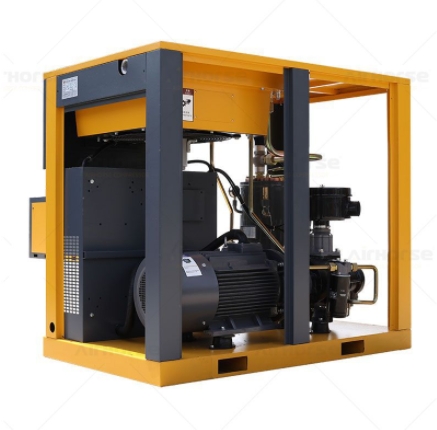How Does a Low Pressure Air Compressor Work and What Are Its Uses?
A low pressure air compressor is a type of compressor that is specifically designed to operate at pressures of less than 150 psi (pounds per square inch). These compressors are typically used for applications that require a continuous and steady supply of compressed air at lower pressures. In this article, we will discuss how a low pressure air compressor works and what its uses are.
How Does a Low Pressure Air Compressor Work?
A low pressure air compressor works in much the same way as a high pressure compressor, but with some key differences. The basic operation of an air compressor involves compressing air, which is then stored in a tank until it is needed for use. In a low pressure compressor, the air is typically compressed to a pressure of between 50 and 100 psi.
The compressor itself consists of a motor that drives a piston or a rotary screw that compresses the air. The compressed air is then directed through a series of tubes and valves to the storage tank. The tank acts as a reservoir for the compressed air, allowing it to be used as needed. When the pressure in the tank drops below a certain level, the compressor kicks in and starts compressing more air to refill the tank.
What Are the Uses of a Low Pressure Air Compressor?
Low pressure air compressors are used in a wide range of applications, including:
Related links:Features of Gloves Counting Machine
Which is the world first electric excavator?
Advantages and Applications of CNC Gang Tool Lathes
Revolutionizing Storage Solutions: Vertical Liquid Tanks Simplify Industries?
The Ultimate Guide to 60t Payload Dump Trucks
Which 30*10.50 idea can maximize your productivity?
5 Key Considerations When Selecting a Robotic Soldering System
Spray painting: One of the most common uses of low pressure air compressors is for spray painting. These compressors provide a steady supply of compressed air at low pressures, which is essential for achieving a smooth and even finish.
Pneumatic tools: Low pressure air compressors are also used to power a variety of pneumatic tools, such as nail guns, staple guns, and sanders. These tools require a steady supply of compressed air to operate effectively.
HVAC systems: Low pressure air compressors are often used in HVAC (heating, ventilation, and air conditioning) systems to power pneumatic controls and actuators.
Medical equipment: Low pressure air compressors are also used in medical equipment, such as ventilators and nebulizers. These devices require a continuous supply of compressed air at low pressures to operate effectively.
Packaging: Low pressure air compressors are commonly used in packaging applications to power machines that seal, label, and package products.
In conclusion, a low pressure air compressor is an essential tool for a wide range of applications that require a steady supply of compressed air at lower pressures. By understanding how these compressors work and what their uses are, you can select the right compressor for your specific needs and ensure that you are able to operate your equipment effectively and efficiently.
Are Electric Lithium Forklifts the Future of Material Handling?
How Does a Sand Making Machine Work?
What is the Principle of Waste Air Separator?
What are the Advantages of Using Induction Heating for Forging?
What are the three basic types of hydraulic pumps?
What is the Height of a Container Ramp?
Different Types of Crushers












